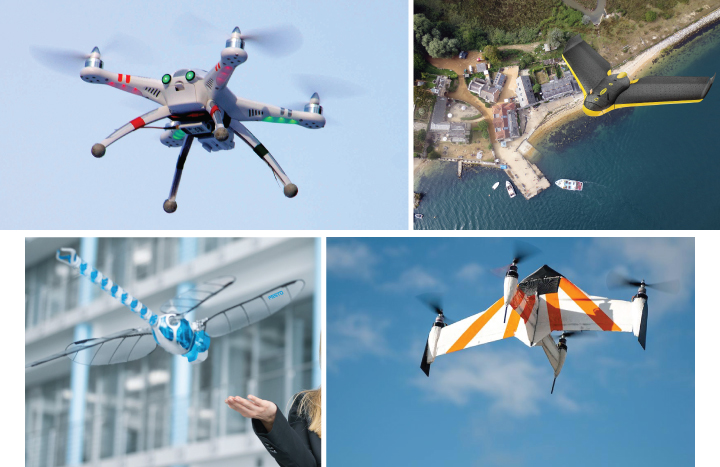Chapter 6Application Challenges from a Bird's-Eye View
Davide Scaramuzza
Robotics and Perception Group, University of Zurich, Zurich, Switzerland
6.1 Introduction to Micro Aerial Vehicles (MAVs)
An unmanned aerial vehicle (UAV), commonly known as a drone, is an aircraft without a human pilot aboard. The international civil aviation organization (ICAO) of the United Nations classifies UAVs into two types: (i) autonomous aircrafts and (ii) remotely piloted aircrafts. UAVs were initially conceived for military applications, but in recent years we have witnessed also a growing number of civil applications, such as law enforcement and firefighting, security and surveillance, agriculture, aerial photography, inspection, and search and rescue.
6.1.1 Micro Aerial Vehicles (MAVs)
The term micro aerial vehicle (MAV) means a miniature UAV that is less than 1 m in size and below 2 kg in weight. Some MAVs can even be as small as a few centimeters and weigh only a few grams (cf. Ma et al. (2013) and Troiani et al. (2013)).
MAVs can be seen as the logical extension of ground mobile robots. Their ability to fly allows them to easily avoid obstacles on the ground and to have an excellent bird's-eye view. MAVs can be classified into rotorcrafts (or rotary wing), fixed or flapping wing, or hybrid (cf. Figure 6.1).

Figure 6.1 A few examples of MAVs. From left to right: the senseFly eBee, the ...
Get Computer Vision in Vehicle Technology now with the O’Reilly learning platform.
O’Reilly members experience books, live events, courses curated by job role, and more from O’Reilly and nearly 200 top publishers.

